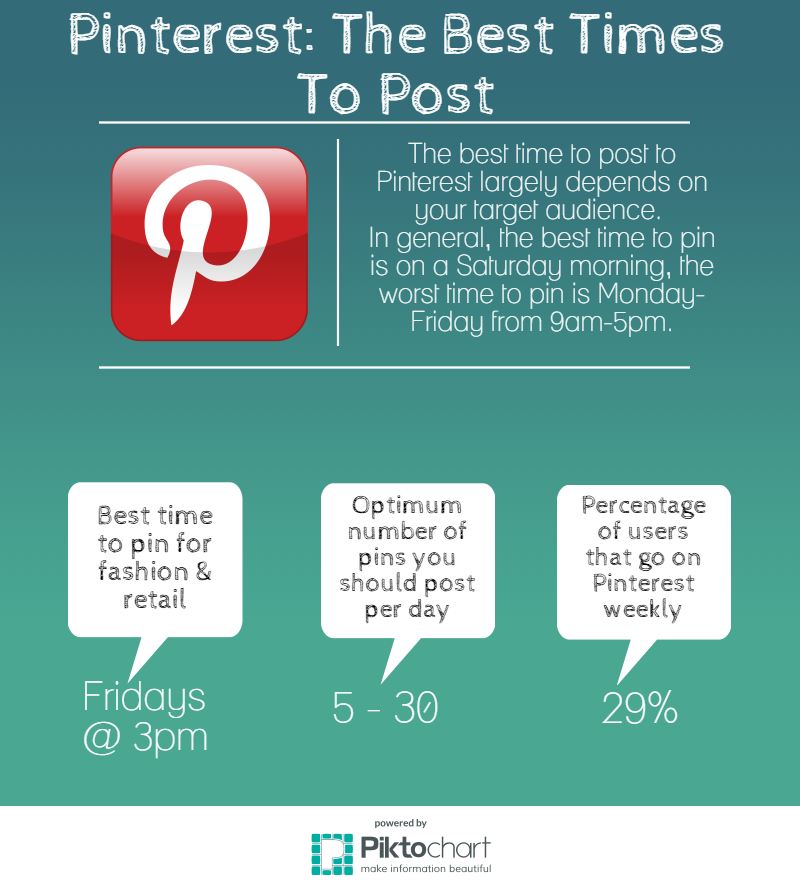Since starting up in 2010, Pinterest has gone from strength to strength. Nowadays, many businesses both small and large are choosing to venture in the world of Pinterest, using the social platform for both personal and business use.
When I first started to use Pinterest from a business perspective, I will admit I was more than a little sceptical. How can Pinterest, a platform that allows its users to pin images to a virtual pin board, be any better at driving website traffic than its older cousins Facebook and Twitter?
Well, in a nutshell, Pinterest allows you to open up your business to a whole new range of potential clients and customers. Not only can customers re-pin what you have pinned to one of your boards, but you can also add your company website to each pin so that potential customers can access it, no matter where the original pin ends up!
That’s great but… is there anything I need to remember when I’m using Pinterest?
As with all social media platforms, Pinterest has it’s very own quirks and differences that make it stand out from the rest. Don’t worry, however, because with these facts and tips you’ll be well on your way to Pinterest greatness!
To give you a little taste of the world of Pinterest, here are some statistics to get you started:
Know Pinterest’s Image Requirements
Before you begin to pin, you need to double check that your image fits with the Pinterest requirements. The standard requirements for a large thumbnail on a board is 222 x 150 pixels. For the smaller thumbnails this is reduced to 50 x 55 pixels.
Add your company website to your description.
Make sure that your customers can get to your website easily by adding a link to your description at the top of your Pinterest page.
It is also essential that you add your website link in each pin description too, this makes it easier for Pinterest users to find your website even if they don’t have time to visit your main Pinterest page.
Add a hover ‘Pin It’ button to your images.
Adding a hover ‘Pin It’ button to your images allows your customers to add images from your website to their own Pinterest boards, which is a great way to get your content out there! Click here for Pinterest’s very own easy to follow instructions on setting up your own hover ‘Pin It’ button.
Want your image to be clicked on more? Use a skinny pin!
‘Skinny pins’ are long, skinny images that require the user to click on them to see the full picture. Using these types of pins piques the user’s curiosity, so don’t be afraid to add a long, thin infographic to your board every now and again!
Take note of the best times to pin.
Like any other social media platform, Pinterest has optimum times to post. Adhering to these times as best you can gives you are higher chance of getting noticed!
Add a watermark to your images.
Adding a watermark or logo to your original images not only makes them look more professional, it also means that the image can always be linked back to your brand and website.
Explore Rich Pins.
Rich pins enable you to add topic-specific descriptions to the pin itself, making it quicker and easier for your target audience to get the information that they need. Rich pins currently come in five categories: film, recipe, article, product and place and are a great way to really connect with any potential customers by understanding their needs. For more information on rich pins, click here.
Remember that the majority of Pinterest users click on blogs & articles rather than retail sites.
Pinterest is, primarily, a place where people can go to look at things that interest and excite them. It is important to remember this when you are deciding what to pin from your website. Pinterest users want content that is going to inspire them and, yes, this could be your latest product. However, the most clicked on pins are content based ones such as blog posts or articles so it is worth keeping this in mind.
Invite others to a group board.
A group board does exactly what it says on the tin. It is a board that anyone (you can choose if they have to be invited or not) can pin to. This is an especially useful tool for business that want to connect more with potential customers over Pinterest. Here is an example of a group board:
When creating a group board, think about what your customers would be interested in that you can create a (not so) little Pinterest community around!
Create appealing content that you can pin.
Content on Pinterest should be a good combination of original and found content. Above all you should be looking to pin content that you think will be useful to your customers. So if you are a wedding business, for example, creating a pin board for bridal hair & make-up tips is something that your customer base would find useful and interesting.
Keep in mind how long Pinterest users spend pinning.
The average Pinterest user spends just 14.2 minutes pinning content that they think is useful to them. Make sure that your pins have impact so that you can make the best impression in such a short space of time!
Pinterest as a business is going from strength to strength, so don’t be afraid of using it to enhance and expand your potential customer base! If you have any questions regarding Pinterest, or you have some Pinterest tips of your own that you would like to share, let us know in the comments!






